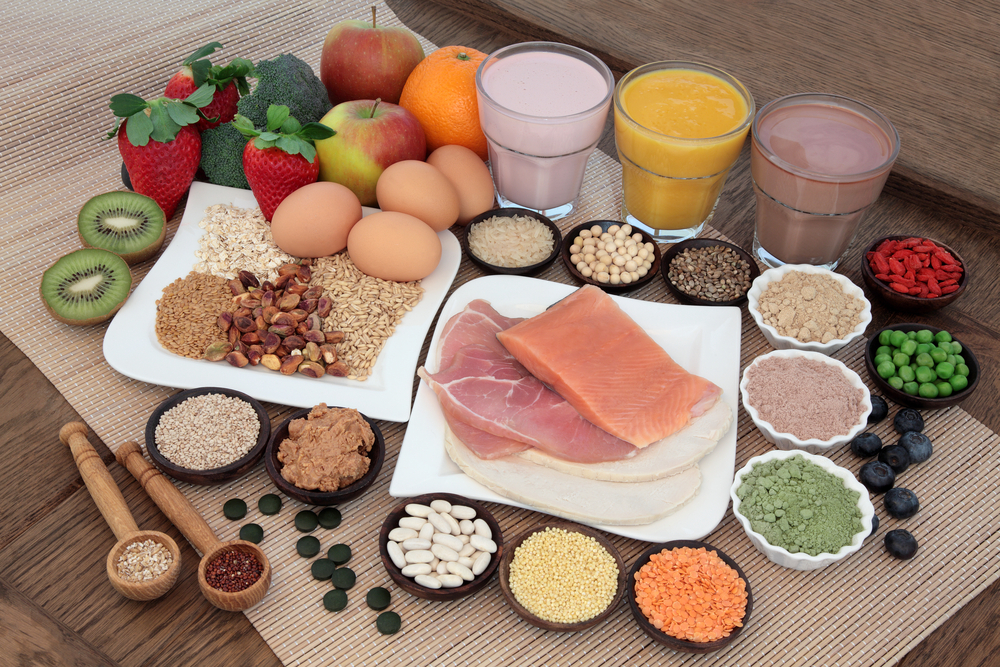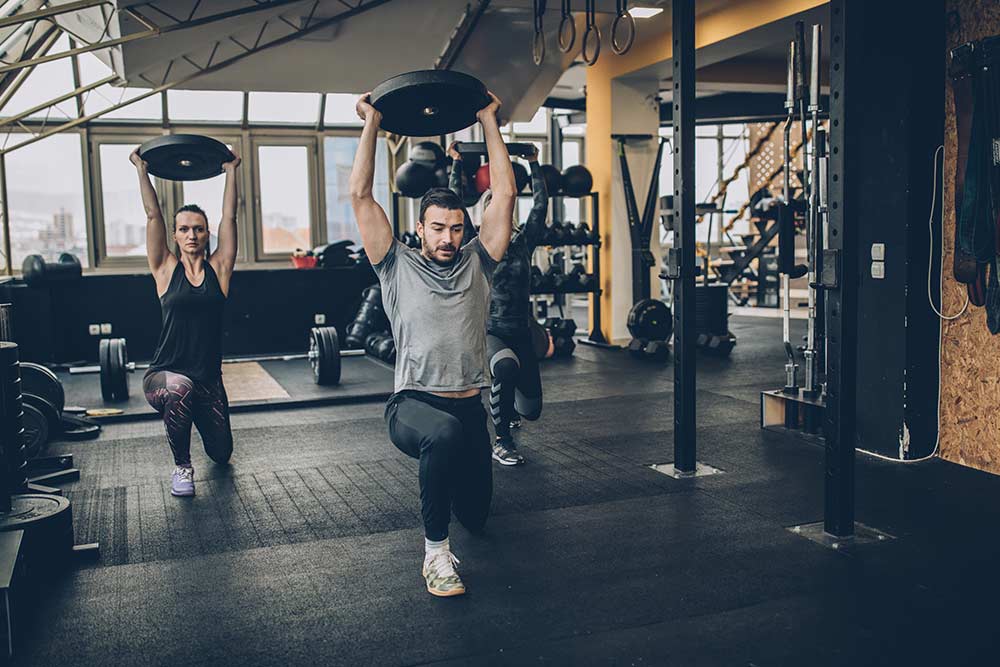How to Optimize Results of Your Workout

Contributed by Gillian White, HBSc, MSc, PhD (C)
A driving force behind the Forever Fit Science movement is the idea that while the loss of muscle mass is a hallmark of aging, there are things we can do to fight the good fight and delay, if not stave off, this process. It can be frustrating as an older adult to adopt a workout routine, only to find that the adaptation or training gains made seem to be much slower than you would hope, or than you remember as a younger version of yourself. This is especially true of muscle mass. Workouts are an anabolic stimulus – a signal to build. This means that they signal the muscle to increase protein content, which in turn builds muscle tissue. The more muscle mass, the greater the strength of the muscles (this is very simplified, but overall holds true).
While this is still true for muscles of older adults, the stimulus of exercise to signal muscles to build (“synthesize”) protein is blunted. This is frustrating news for older adults working hard out there and at Forever Fit Science, we don’t take this lying down. Finding ways to boost the stimulus is a logical way to get more out of your workout and stick it to nature’s cruel game. One simple way to enhance the anabolic stimulus of a workout is your post-exercise nutrition.
The Importance of Protein
Most people are familiar with the idea of supplementing with protein. The general idea is that during a workout, the stress of exercise breaks proteins down. Protein in the diet rebuilds and enhances muscle mass and strength, providing the resources needed for these processes. Recently, there has been a lot of talk about chocolate milk for recovery. There is some merit to the recommendation (although, it’s probably a stretch to say it’s the “perfect recovery drink”). Proteins are made from amino acids that we get from our diet. These are broken into two types: essential amino acids – these we need to get from our diet; and non-essential amino acids – those that we can build by rearranging parts of the essential amino acids.
Related Article: Gene-base Nutrition: Can it Benefit You?
Optimize Results of Your Workout With Leucine
For building muscle protein, one particular amino acid is very important – leucine. Leucine is found in a number of food types but particularly meat and dairy, specifically in whey protein (a component of dairy products). In addition to protein breakdown during a workout, we also use up our energy stores in muscles (intramuscular glycogen, a carbohydrate store; and intramuscular triglycerides, a fat store), which also need to be replaced after a workout. So the idea behind chocolate milk is that it has a relatively high leucine content as well as glucose (sugar) and fat to replace muscle glycogen and triglycerides. The catch is that it is actually very high in sugar (almost as much as a Coke), which induces a high insulin response. The high insulin response may actually blunt net protein gain after a workout in older adults (Volpi et al. 2000).
The Research
So if chocolate milk isn’t the fountain of youth post-workout, what is? A recent article from Luiking et al. (2014) out of Holland published in the BioMed Central Nutrition Journal compared the effects of a dairy drink with a typical amount of milk protein (control) and a dairy drink enhanced with leucine and whey protein (experimental) on muscle protein synthesis at rest (effect of just the drink itself) and after a resistance training exercise (effect of the drink plus exercise).
Subjects were healthy adults (average age of 60 years old, both males and females) with a normal BMI (between 21-30 – typical Dutch!). Participants exercised only one leg so they could compare the effects of the drink on protein synthesis both with and without an added exercise stimulus. They found that the drink enhanced with leucine and whey protein resulted in a greater increase in protein synthesis of the muscles overall, and this effect seemed to be enhanced (though not statistically significant) when the drink was used as a post-exercise supplement (See figure 1).
When they ran statistical analyses to identify which factors were the most important contributors to this effect, they found that the increase in leucine in the blood was the most important. So the takeaway message seems to be, increasing leucine in the diet not only acts as a protein synthesis stimulant on it’s own (hello, rest day) but is especially important after exercise in older adults.
Related Article: Chocolate Milk at the End of Practice
Resistance Training
While this shows improvements following a single workout, do these effects translate into long-term gains with resistance training? A 2015 meta-analysis published in Sports Medicine reviewed the existing studies and found that resistance training had a significant effect on muscle mass and strength in older adults (but we already knew that), and that supplementing with protein in addition to resistance training results in further increases in fat-free mass (muscle and bone).
So when you’re on your way to the gym, way home from the gym, or sitting on your couch for a rest day, consider whether you’re taking in the resources your body needs to get stronger – leucine and milk protein can be a great ally in your battle with age over your muscle mass!
Guidelines for Post-Exercise Nutrition
- Try to get your post-exercise nutrition in as soon as possible.
- Aim for 20 grams of protein post-workout. Whey protein is a good option.
- Aim for 3 grams of leucine following your workout – 15 min to an hour post-workout, max! See the list of leucine-rich foods below.
- On recovery days, still aim for 1.25-1.5 g of protein for every kg of body weight. This is higher than the 0.8/g/kg/day recommended for younger people (if you weigh 70 kg, you should try to be taking in between 87.5-105 grams of protein in a day) (Finger et al. 2015).
Some good sources of leucine include:
- Lean meats/poultry (chicken, turkey, lean beef, pork)
- Fish/seafood (tuna, cod, pike, octopus)
- Dairy (cheese – especially milk, yogurt, parmesan cheese)
- Legumes (soy beans, peanuts, white beans, lentils)
Related Article: Precision Nutrition and You: Nutrigenomic Approaches To Disease And Health
References
1. Finger D, Goltz FR, Umpierre D, Meyer E, Rosa LH, Schneider CD. (2015)
2. Luiking YC, Deutz NEP, Memelink RG, Verlaan S, & Wolf RR. (2014)
3. Volpi E, Mittendorfer B, Rasmussen BB, Wolfe RR: (2000) The response of Effects of protein supplementation in older adults undergoing resistance training: a systematic review and meta-analysis. Sports Med 45(2): 245-55. Postprandial muscle protein synthesis is higher after a high whey, leucine enriched supplement than after a dairy-like product in healthy older people: a randomized controlled trial. Nutrition Journal 13:9. muscle protein anabolism to combined hyperaminoacidemia and glucose-induced hyperinsulinemia is impaired in the elderly. J Clin Endocrinol Metab 85: 4481–4490.You Might Like:
















